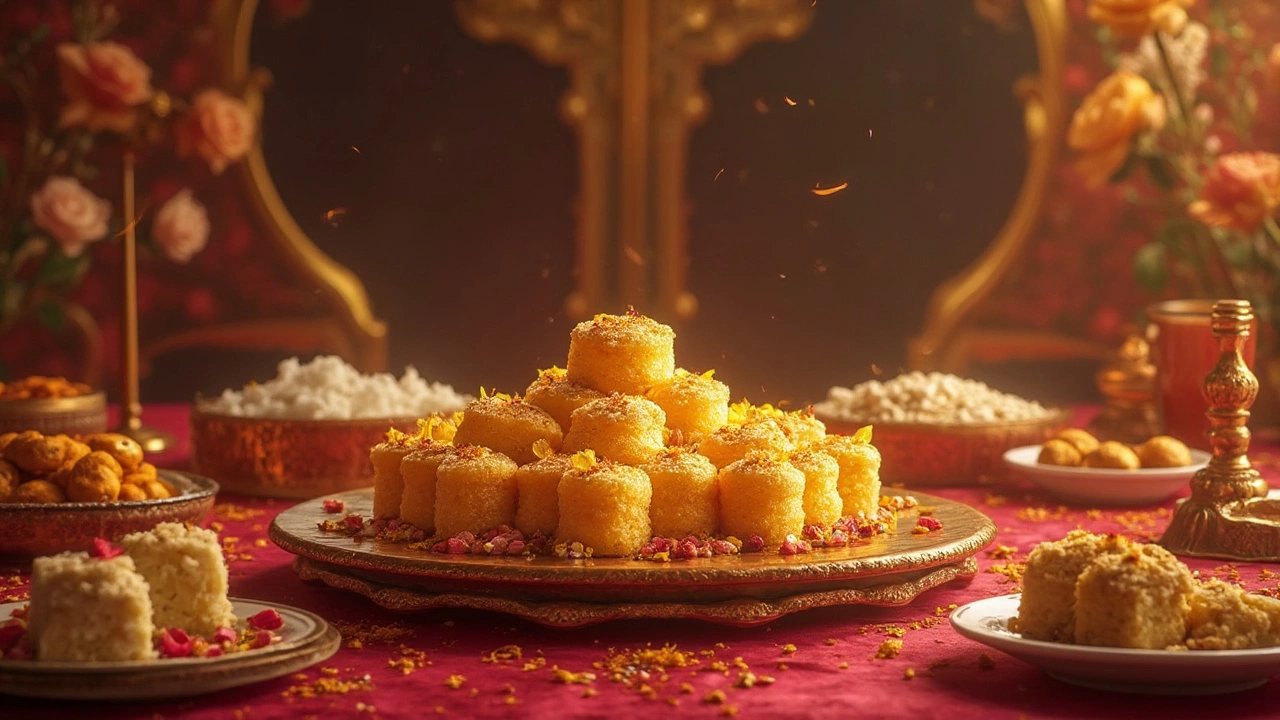Mithai – The Sweet Heart of Indian Desserts
When talking about Mithai, traditional Indian sweets made with sugar, dairy, nuts, and spices. Also known as Indian confectionery, it blends cultural stories with flavorful chemistry.
Every great Sugar, crystalline sweetener that drives sweetness, texture, and preservation in desserts and Ghee, clarified butter prized for its rich aroma and high smoke point forms the backbone of most mithai. Sugar influences the grainy or smooth mouthfeel, while ghee enriches the flavor profile and extends shelf life. Together they enable the classic caramelization that defines many Indian sweets.
Regional Flavors and Signature Styles
India’s vast landscape spawns a dizzying variety of mithai. From Bengal’s delicate rasgulla bathed in syrup to Punjab’s buttery gajar ka halwa, each region adds its own twist. The South favors coconut‑based payasam, while the West loves nut‑laden basundi. This regional spread shows that Mithai encompasses both milk‑based and grain‑based creations, reflecting local produce and climate.
Ingredients like cardamom, saffron, and pistachios often appear as finishing touches. These spices act as flavor amplifiers, turning a simple milk‑sugar mix into a fragrant masterpiece. The use of edible silver leaf, known as varak, adds visual appeal and a subtle taste boost, linking aesthetics with culinary technique.
Health‑conscious readers might wonder how these indulgent treats fit into a balanced diet. Studies suggest that moderate sugar intake is okay, but excessive consumption can spike blood glucose. Interestingly, the sugar in mithai is often combined with protein‑rich dairy, which can slow absorption. Still, the calorie density remains high, so portion control is key.
Beyond sugar, ghee contributes healthy fats that support fat‑soluble vitamin absorption. Yet, ghee is calorie‑dense, so swapping a portion with low‑fat milk can reduce calories while keeping that buttery note. Some modern recipes even replace part of the ghee with coconut oil to add a tropical twist without sacrificing texture.
Storage matters as much as cooking. Traditional sweets like ladoos stay fresh for weeks if kept airtight, while syrup‑soaked treats like gulab jamun need refrigeration to prevent spoilage. The same principles that extend chutney shelf life—cool, dry environments and proper sealing—apply here, ensuring you enjoy every bite without waste.
Pairing mithai with beverages enhances the tasting experience. A hot cup of masala chai balances the sweetness, while a cold glass of lassi offers a refreshing contrast. Even a simple filter coffee can cut through the richness of a dense milk‑based sweet, highlighting layered flavors.
Today’s chefs experiment by infusing global trends—think chocolate‑coated barfis or low‑sugar almond flour halwas. These innovations keep the tradition alive, inviting younger palates while respecting the core ingredients. Whether you stick to classic recipes or try a modern spin, the fundamentals—sugar, ghee, and technique—remain the same.
Below you’ll find a curated set of articles that dive deeper into each of these aspects: ingredient science, regional recipes, health perspectives, and clever kitchen hacks. Explore the collection to sharpen your sweet‑making skills and discover new ways to enjoy Mithai at home.

Discover India's Most Expensive Sweet: A Delicious Revelation
Indian sweets are a way of life, not just an after-meal indulgence. But what if we told you not all mithai comes cheap? Dive into the world of opulent Indian sweets, where the luxurious 'Sweet Kohinoor' tops the list as the most expensive treat. Learn about its rich ingredients and what makes it worth savoring.